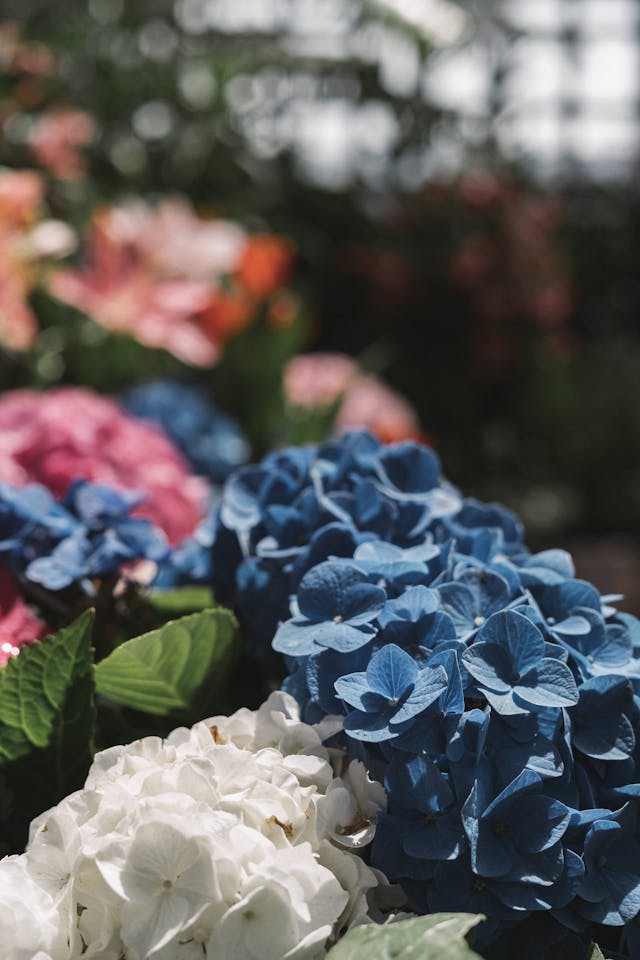
The world of plant fertilisation isn’t about finding one bottle and using it on every species in your garden. The varieties and families in your garden will have a range of different care requirements, with feeding playing into this equation significantly. Hydrangea feed, for example. is the kind of thing that you need to be really considerate of while buying for your garden.
If you’re lucky enough to know somewhere with large hydrangea plants for sale, then you should make sure to care for the plants sufficiently. This blog will offer guidance on hydrangea feeding, touching on the scientific principles that will guide your fertiliser going forward.
What goes into hydrangea food?
Every fertiliser has an N-P-K ratio, referring to the different levels of Nitrogen (N), Phosphorus (P) and Potassium (K) in it. Each of these chemicals influences a different aspect of plant growth:
- N promotes leafy foliage growth
- P inspires root development and flowering
- K is an all around support system for plant health and immunity
Hydrangea plant food should generally be balanced, with an N-P-K ratio around 10-10-10. However, some people believe you should lean toward a slightly higher amount of P, as it can encourage additional blooms.
How to use hydrangea feed properly
After buying plant food for hydrangeas, it’s just as important to properly understand how you’re meant to use the feed. The primary thing you need to keep in mind is that whether feeding Blue Ball or Angel Wing hydrangea plants, the plants are not heavy feeders. Too much fertilisation will lead to more leafy growth, with fewer flower buds.
When & how to feed hydrangeas
Hydrangea food should be applied in early spring, with a lighter second application delivered later in the season. Late fertilisation will encourage vulnerable new growth, that will suffer in the winter. The feeding process itself will be easy enough to follow as described on the product.
Hydrangeas can also be fed and supported naturally with the use of homemade compost. Mulching around the base and root zone of a hydrangea plant will provide a slow release of plant-friendly nutrients, while also retaining moisture and adding structure to soil.
Hydrangea feeding to influence flower colour
Certain hydrangea varieties like macrophylla and serrata can change colour based on the nutrient content of their soil. The primary focus of this process is to alter the soil’s pH and aluminium content, resulting in either blue or pink/red flowers.
Hydrangea feed for blue flowers
You can encourage the growth of blue flowers by including additives that will increase soil acidity (5.5 pH or lower) in your feed such as:
- Aluminium sulphate
- Elemental sulfur
- Coffee grounds/pine needles
It’s worth noting that high levels of phosphorus (P) can bind with aluminium in soil, detracting from plant absorption, making for less blueing in petals.
Hydrangea food for pink/red flowers
Raising the pH level over 7.0 or higher is a way to encourage the growth of pink or red hydrangea flowers, with common additives including:
- Garden lime/dolomitic limestone
- Higher phosphorus fertiliser
And, of course, avoid any aluminium sulphate or other kinds of blueing agents.
Remember, not all hydrangeas will change colour so if this is part of your gardening ambition, make sure to seek out Hydrangea macrophylla or serrata. The colours will change, but be patient with them and don’t expect results overnight.
Final considerations
Before you go to town with hydrangea feed, make sure to make some final checks and considerations, such as:
- Testing soil pH
- Analysing your plant’s health and characteristics
- Keeping the soil healthy
With these general guidelines and the other advice in this article, you should feel confident to fertilise and feed hydrangeas like never before.
© Copyright 2025 Antonia, All rights Reserved. Written For: Tidylife


Leave a Reply